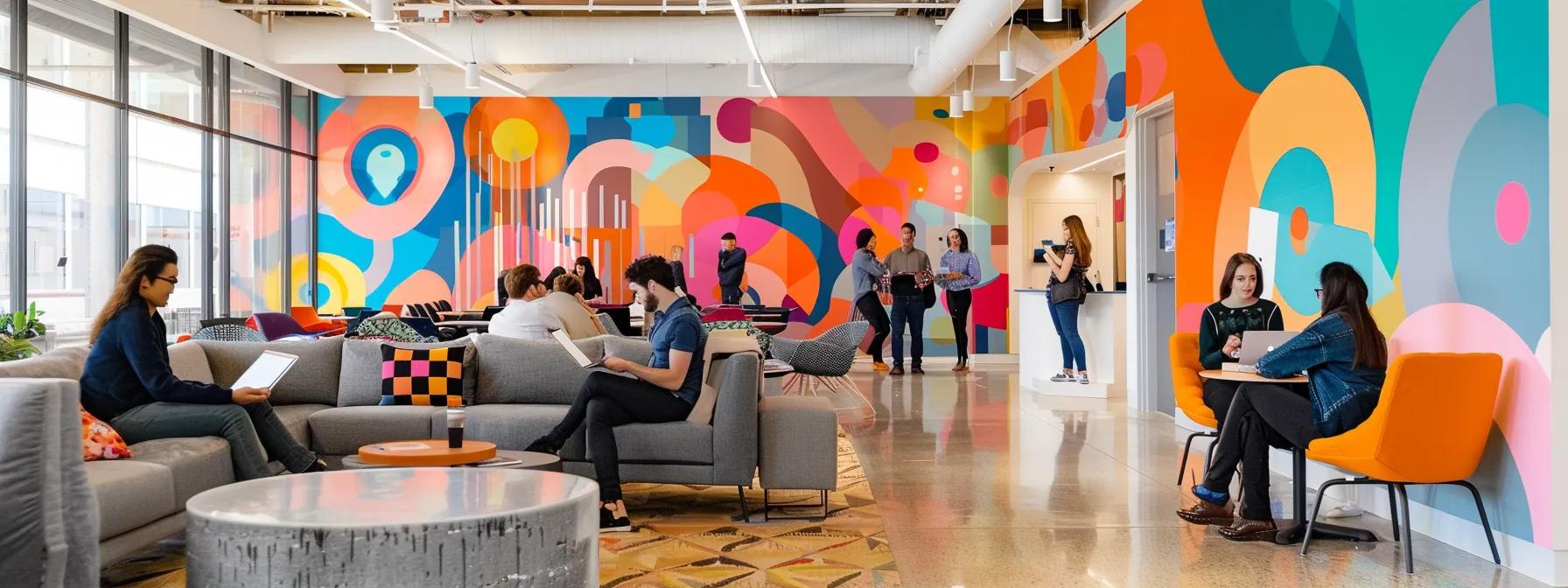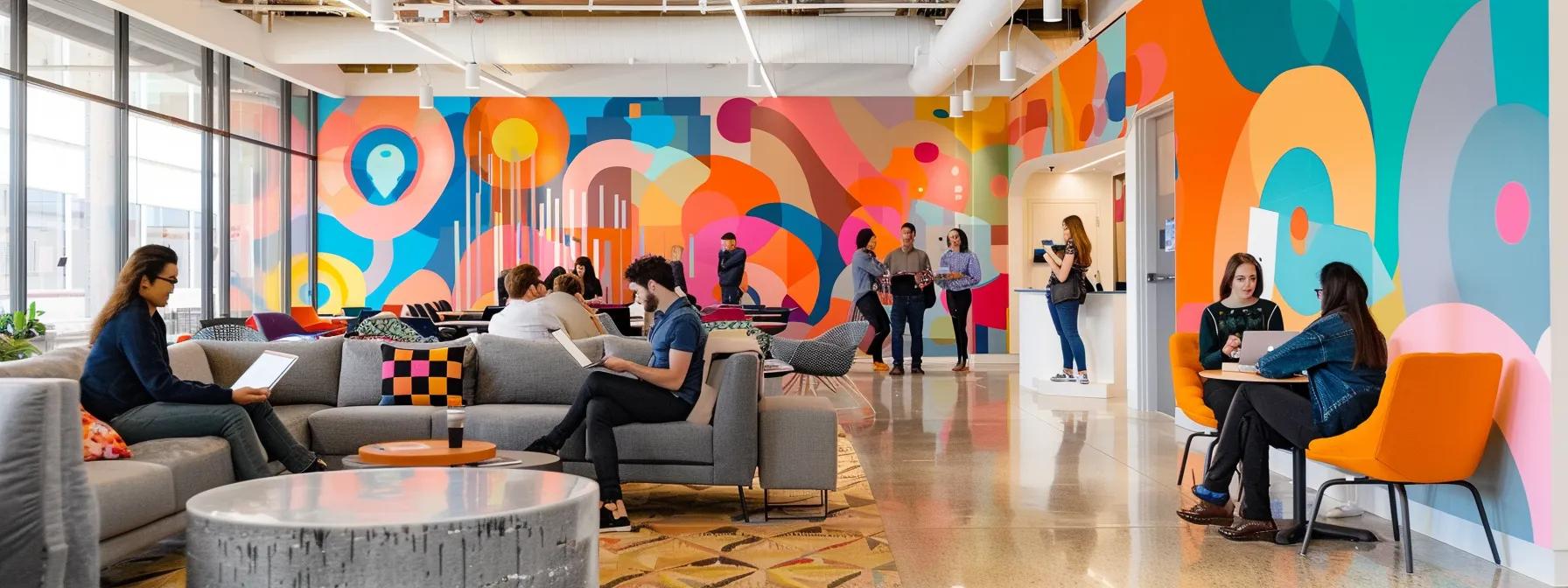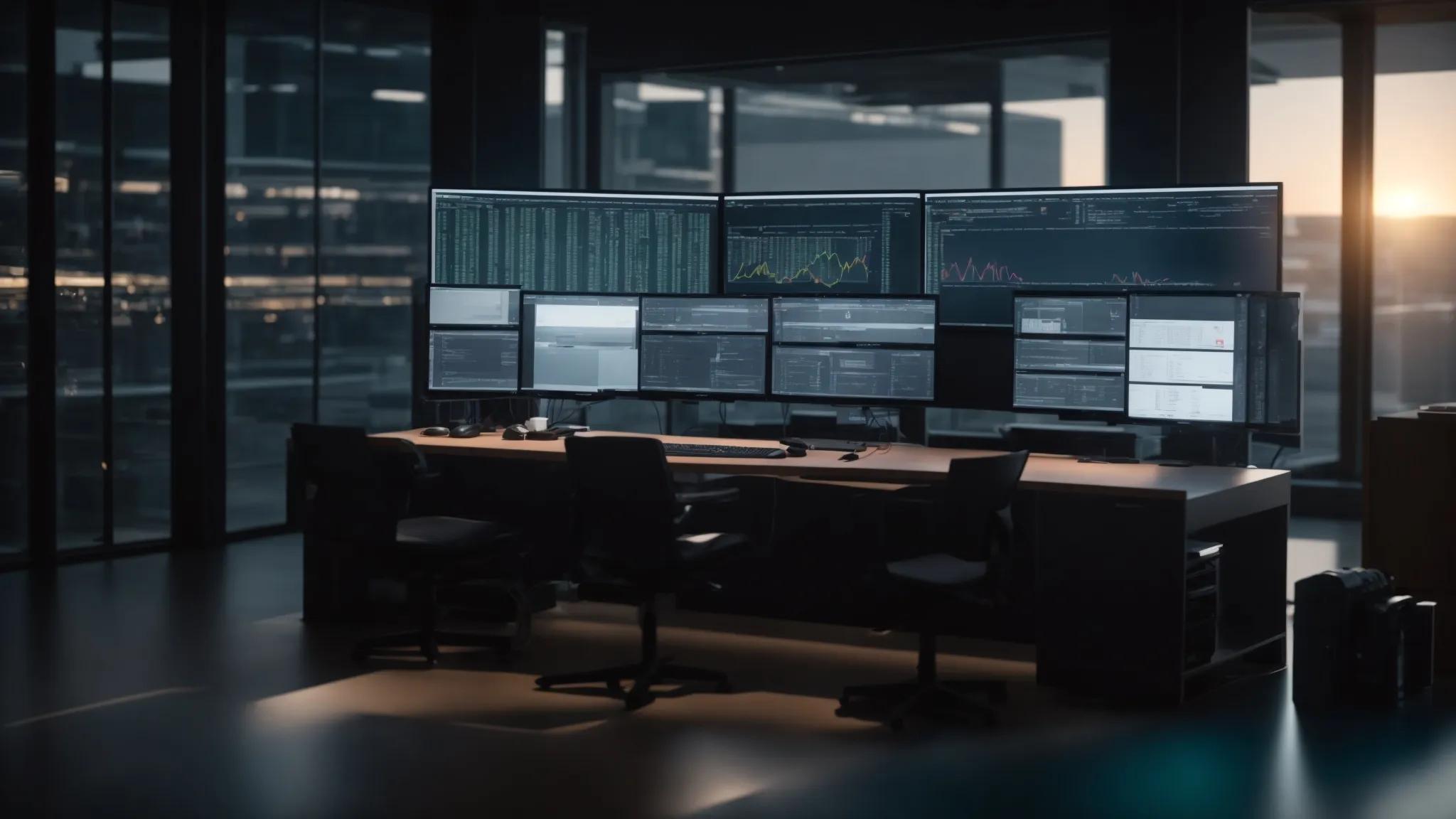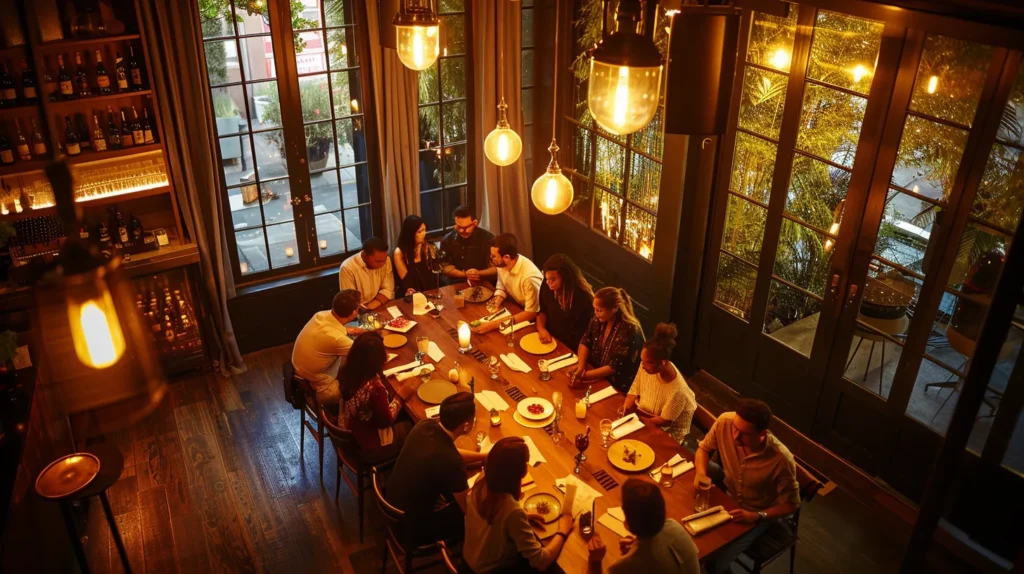
How AI Is Shaping the Future of Creativity
Artificial Intelligence (AI) has transcended science fiction to become an essential element in creative endeavors. Today, AI tools are redefining possibilities in music, visual arts, literature, and architecture. This article examines how AI transforms creative expression through novel tools, methodologies, and ethical considerations. Focusing on generative art, algorithmic processes, and human-machine collaboration, we explore technological advancements, philosophical implications, and new aesthetic possibilities. In addition, practical applications in product design and architectural innovation are discussed alongside the evolving definitions of creativity and authorship in an AI-assisted era. Finally, the economic and ethical dimensions of AI-driven art are considered to provide a comprehensive picture of the future of creative expression.
AI and Creativity Converge to Redefine Artistic Expression
The relationship between AI and creativity is evolving rapidly as technology complements human intuition to redefine artistic production.
Intelligent Tools Augmenting Human Creative Capabilities
AI-powered tools automate repetitive tasks and provide real-time feedback, allowing artists to focus on high-level creative decisions. Modern software can analyze brush strokes in digital paintings or suggest chord progressions based on genre data. Applications like Adobe’s Sensei leverage deep learning to enhance image editing, reducing production time and boosting creative output significantly. Additionally, AI design assistants generate multiple concept variations within seconds, enabling artists to explore innovative solutions and forecast trends—all without compromising artistic integrity.
Algorithmic Processes Generating Novel Artistic Forms
A new genre of art has emerged where algorithms generate complex visual and auditory experiences. Using randomization, fractal mathematics, and neural networks, these systems produce unique outputs every time. Generative adversarial networks (GANs), for example, learn from thousands of images to create portraits that fuse multiple styles. This process blurs the line between artist and tool and encourages a reconceptualization of originality. Data-driven art, marked by both precision and unpredictability, is paving the way for interactive and evolving artistic experiences.
The Expanding Definition of an Artist in the Age of AI
AI’s rise prompts us to revisit the definition of an artist. Traditionally seen as a solitary creator driven by emotion, artists now often serve as both creators and curators who set parameters for AI algorithms. In many AI-assisted projects, human artists refine machine outputs, merging their personal vision with computational power. This collaboration challenges established notions of artistic credit and intellectual property. Institutions like the University of Oxford are responding by offering courses that blend computer science with fine arts, preparing creators for a future where art is inherently data-driven.
AI’s Influence on Breaking Creative Barriers
AI’s capacity to process enormous datasets and identify hidden patterns is unlocking creative barriers once deemed insurmountable. By analyzing historical art movements, cultural trends, and consumer sentiment, AI reveals connections that enrich our understanding of art. In the commercial world, AI insights fuel product development and design optimization, ensuring creative outputs remain relevant. This transformation impacts industries at large by opening new markets and elevating artistic discourse.
Exploring New Aesthetic Possibilities With AI Assistance
AI extends creative capabilities well beyond traditional expression. It enables the creation of interactive installations and dynamic digital sculptures that evolve with viewer interactions. Integrating augmented reality (AR) and virtual reality (VR), AI offers immersive experiences that adjust in real time to changes in light, sound, or human input. This dynamic feedback loop results in multi-sensory experiences that invite audiences to engage, interpret, and even co-create art, redefining static art forms into living narratives.
Generative Design Spearheading Innovation Across Creative Fields
Generative design is an emerging field where AI explores design possibilities beyond traditional human creativity.
Core Concepts of Generative Design in Creative Applications
Generative design uses algorithmic techniques to autonomously generate design solutions from predefined parameters and constraints. This approach produces everything from simple geometric patterns to complex architectural models. Key principles include iterative testing and optimization cycles using genetic algorithms, which can reveal design configurations that would be impractical to conceive manually. For instance, in product design, engineers use generative design software to explore thousands of structures balancing efficiency, weight, and strength, significantly aiding industries like aerospace and automotive manufacturing.
AI Driven Generative Processes in Visual Arts and Music
In both visual arts and music, AI-driven generative processes are revolutionizing creation. Visual artists employ neural networks and GANs to transform raw data into vivid, abstract compositions that interweave historical motifs with contemporary trends. In music, AI analyzes vast libraries of compositions to generate new melodies and harmonies, simulating various instruments and styles. Platforms such as Amper Music and AIVA demonstrate how algorithmic composition complements human artistry, ensuring that outputs remain innovative and culturally resonant.
Practical Uses of Generative Design in Product and Architectural Innovation
Generative design is proving effective in practical applications. In product design, companies use these techniques to create lightweight yet robust components, crucial for performance and cost reduction. In aerospace, intricate lattice structures improve both strength and efficiency. Similarly, architects are using simulation to optimize natural lighting, airflow, and energy efficiency in buildings. These sustainable designs not only cut energy costs but also underscore the creative potential of AI in merging function with aesthetics.
The Future of Art Influenced by Generative Methodologies
Generative design methodologies herald a future in which technology and art are seamlessly interwoven. As these methods become routine, the line between craftsmanship and computational precision will fade. Artists will increasingly use AI not just as a tool but as an integral partner in storytelling. Imagine a public sculpture that changes shape with the weather or a digital canvas that evolves based on audience interaction—these concepts are already under exploration in forward-thinking studios and research labs worldwide.
How AI and Creativity Fuel Iterative Design Solutions
Iterative design, powered by AI, enables continuous refinement of creative work. By analyzing previous iterations and integrating user feedback, AI improves design outcomes with each cycle. For example, automotive designers use simulation and iterative testing to optimize vehicle components for better aerodynamics and safety. Similarly, digital artists enhance their visuals progressively, resulting in artworks that are both innovative and finely tuned for real-world applications.
The Shifting Paradigm of the Future of Art Through AI
AI is fundamentally altering how art is produced, circulated, and appreciated, triggering a paradigm shift in originality and value.
AI Generated Artworks Entering Mainstream Galleries and Exhibitions
Art galleries and museums are beginning to exhibit AI-generated artworks alongside traditional pieces. Creations from systems like DeepDream and style-transfer algorithms have sparked debates on creativity and the future of art markets. These digital works challenge the traditional artist–collector relationship and have even fetched high auction prices for their technical complexity and novelty. This trend highlights the growing acceptance of AI art as a legitimate form of creative expression.
Assessing Originality and Authorship in AI Created Art
AI-generated art raises complex questions of originality and authorship. While some critics contend that a lack of human emotion undermines authenticity, others argue that the collaborative creative process between human and machine produces a new kind of originality. Determining creative ownership is becoming increasingly complex, with discussions ongoing about whether credit should go to the AI’s programmer, the human artist, or a combination of both.
The Economic Impact of AI on Art Markets and Creators
Beyond its creative benefits, AI significantly influences the economics of art. By lowering production costs and enabling rapid prototyping, AI democratizes art creation, allowing emerging artists to compete with established figures. Digital art platforms powered by AI have given rise to new revenue models, including sales of art as digital tokens on blockchain networks. This shift is redefining roles within the art world and may lead to new models of art valuation and revenue generation.
AI’s Role in Art Restoration and Preservation
AI is also proving invaluable for art restoration and preservation. Advanced imaging techniques, augmented reality, and computational analysis help conservators detect minute deteriorations in artworks. Neural networks can digitally recreate missing sections of paintings, preserving both their aesthetic and historical integrity. These non-invasive methods not only safeguard our cultural heritage but also offer new insights into traditional artistic techniques.
Anticipating the Next Wave of AI Driven Art Movements
As AI evolves, its influence is expected to inspire entirely new art movements characterized by personalization, interactivity, and data-driven aesthetics. Future trends are likely to involve real-time audience feedback, with artworks that change during exhibitions. The convergence of virtual reality (VR) and AI is paving the way for immersive installations where art responds dynamically to viewer emotions and environmental stimuli.
Human-Ai Collaboration Unlocking New Creative Potentials
The collaboration between humans and AI is redefining creative processes, producing works that are richer, more diverse, and deeply reflective of our complex cultural narratives.
Artists and AI Systems as Creative Partners
Increasingly, artists view AI systems as collaborative partners rather than mere tools. By combining human intuition with machine precision, creators can generate a multitude of variations from a single idea. This dialogue between human and machine enriches the creative process and has, in some cases, increased creative output substantially. Such collaborations are redefining what it means to be an artist in the digital age.
AI Facilitating Complex and Data Intensive Creative Projects
One of AI’s greatest strengths is its ability to handle and analyze large volumes of data quickly. This capability is particularly beneficial for projects that require synthesizing diverse data sources into coherent creative narratives. Whether it is analyzing historical art trends or compiling vast musical datasets, AI provides insights that enable artists to create works with depth and precision.
Personalized Creative Experiences Powered by AI
Personalized AI is revolutionizing creative experiences by tailoring art to individual preferences. By analyzing past interactions and social media activity, AI can curate bespoke art recommendations and enable interactive exhibits that adapt in real time. This personalized approach not only enhances user engagement but also makes high-quality art more accessible and relevant to diverse audiences.
Training AI Models for Specific Artistic Styles and Outputs
Many artists and institutions are investing in training AI to achieve specific artistic styles. By curating datasets that capture the nuances of particular genres, AI models can generate outputs that faithfully reflect the desired aesthetic. For example, an AI trained on impressionist paintings will mimic the characteristic brush strokes and color palettes of that movement, expanding the possibilities for hybrid and experimental art forms.
The Synergy of Human Intuition and Machine Intelligence in Creativity
At the core of successful AI-assisted creativity is the synergy between human intuition and machine intelligence. While AI excels at processing data and iterating rapidly, human creators contribute emotion, context, and nuanced judgment. This balanced collaboration often leads to more innovative and refined creative outputs than either could achieve alone.
Addressing Ethical Dimensions in AI and Creativity
The integration of AI into creative practices brings ethical challenges that span intellectual property, bias, and the future of creative employment.
Copyright Considerations for AI Generated Creative Works
Determining ownership of AI-generated art is complex since existing copyright laws were not designed for contributions made by autonomous systems. Ongoing discussions, including those by researchers at the University of Exeter, focus on how to fairly credit the roles of both the programmer and the artist, and whether a new copyright category is needed to accommodate AI contributions.
The Authenticity Debate Surrounding AI Art
A central debate in AI art concerns authenticity. Critics argue that the absence of human emotion compromises authenticity, while proponents maintain that the creative process—characterized by the collaboration between human and machine—creates a new form of authenticity. As AI becomes more integrated, our understanding of what is “authentic” in art is likely to broaden.
Mitigating Bias in AI Creative Algorithms
Bias in AI models is a critical concern, as training data often reflects historical and cultural imbalances. This can inadvertently perpetuate biases in AI-generated art. Efforts to diversify training datasets and implement ethical guidelines are essential to produce outputs that are innovative and culturally representative. Greater transparency and collaboration with diverse artistic communities are key to addressing these issues.
The Impact of AI on Employment in Creative Industries
While AI increases efficiency, there are concerns about its impact on creative employment. The automation of certain tasks may displace traditional roles such as graphic designers and composers. However, many experts believe that AI will augment rather than replace human creativity, enabling professionals to focus on higher-level conceptual tasks. Preparing the workforce through re-skilling initiatives and specialized educational programs is essential for a balanced future.
Establishing Responsible Frameworks for AI in Creative Practices
To fully harness AI’s potential while minimizing risks, it is imperative to establish responsible frameworks. These should address transparency in data use, ethical guidelines for model training, and accountability in creative processes. Collaborative efforts among legal, cultural, and technological stakeholders are crucial for developing standards that ensure an equitable and innovative creative ecosystem.
Emerging Trends and Projections for AI in the Creative Sphere
As AI becomes more integrated into creative fields, several emerging trends signal transformative shifts in how art is conceived and experienced.
AI’s Role in Crafting Interactive and Immersive Art Experiences
AI-powered interactive art is redefining audience engagement. With augmented reality (AR) and virtual reality (VR), installations now respond in real time to viewer movements, voices, or even biometric data. This responsiveness transforms exhibitions into dynamic, personalized experiences where the line between artist and spectator blurs, fostering an immersive dialogue.
The Democratization of Creative Tools via AI Platforms
State-of-the-art AI platforms have democratized access to creative tools that were once limited to specialists. Today, generative design software, music composition programs, and digital painting applications are available online, allowing hobbyists and emerging artists to experiment and create. This democratization drives innovation by incorporating diverse perspectives and fostering a more inclusive creative community.
Predictions for AI’s Long Term Influence on Creative Professions
Looking ahead, AI is set to become an integral part of professional creative workflows. As AI systems become more adept at replicating and innovating human aesthetics, roles within creative industries may shift towards strategy and curation. Cross-disciplinary collaborations are expected to flourish, and educational institutions are adjusting curricula to include AI and machine learning, ensuring that future professionals are equipped to thrive in this evolving landscape.
AI Fostering Cross Disciplinary Artistic Endeavors
AI naturally facilitates cross-disciplinary projects that blend art with science, engineering, and social studies. Projects that utilize biological data to create organic visuals or employ architectural algorithms for urban design exemplify AI’s capacity to drive innovation across fields. Acting as a bridge between disparate domains, AI fosters breakthroughs that redefine both art and science.
The Continuous Evolution of AI and Creativity in the Coming Decade
The future of creative industries depends on the ongoing evolution of AI technologies. As machine learning algorithms become more sophisticated, they will unlock new methods for creating art that blends virtual and physical elements. Future AI tools may not only generate art but also predict audience responses, allowing creators to fine-tune their work in real time. The next decade promises a creative renaissance fueled by AI, transforming art into an ever-evolving conversation between technology and human spirit.
Frequently Asked Questions
Q: How do AI tools enhance creative workflows? A: AI tools automate repetitive tasks, generate design variations quickly, and provide real-time feedback. This allows artists to focus on high-level creative decisions, ultimately resulting in faster production and more innovative outcomes.
Q: What role does generative design play in modern creativity? A: Generative design uses algorithms to explore a vast range of design alternatives. It is widely used in product design and architecture to optimize efficiency, reduce weight, and uncover aesthetic possibilities that traditional methods might overlook.
Q: How is AI influencing intellectual property rights in art? A: AI-generated artworks raise complex concerns regarding authorship and copyright. Ongoing debates focus on whether credit should be allocated to the machine’s programmer, the human artist, or both, prompting discussions on updating intellectual property laws.
Q: Can AI-generated art be considered authentic? A: The authenticity of AI-generated art is debated. Critics point to the absence of human emotion, while proponents argue that the innovative collaborative process between human and machine establishes a new form of authenticity.
Q: What are the economic implications of AI in the creative sector? A: AI lowers production costs and speeds up creation, democratizing access to artistic tools. This promotes increased market competition and new revenue models, including digital art sold via blockchain, while also prompting a re-evaluation of traditional creative roles.
Q: How will AI impact future art education? A: Future art education will integrate AI and machine learning, equipping creatives with the technical skills needed for the digital landscape. Curricula are evolving to combine traditional artistic training with innovative computational methods.
Q: What ethical challenges does AI pose in the creative industries? A: Ethical challenges include copyright issues, biases in training data, and potential job displacement. Establishing responsible frameworks and diversifying datasets are critical to ensure that AI supports an equitable, innovative creative ecosystem.
Final Thoughts About AI Reshaping the Landscape
AI is reshaping the creative landscape by merging human ingenuity with computational power. It redefines artistic processes, expands creative boundaries, and fosters innovations beyond traditional art forms. With responsible implementation and continual evolution, AI promises to enrich creative expression while challenging conventional paradigms in art, design, and cultural production. Collaboration between humans and machines is set to become the cornerstone of future creative endeavors, driving both artistic and economic progress.









